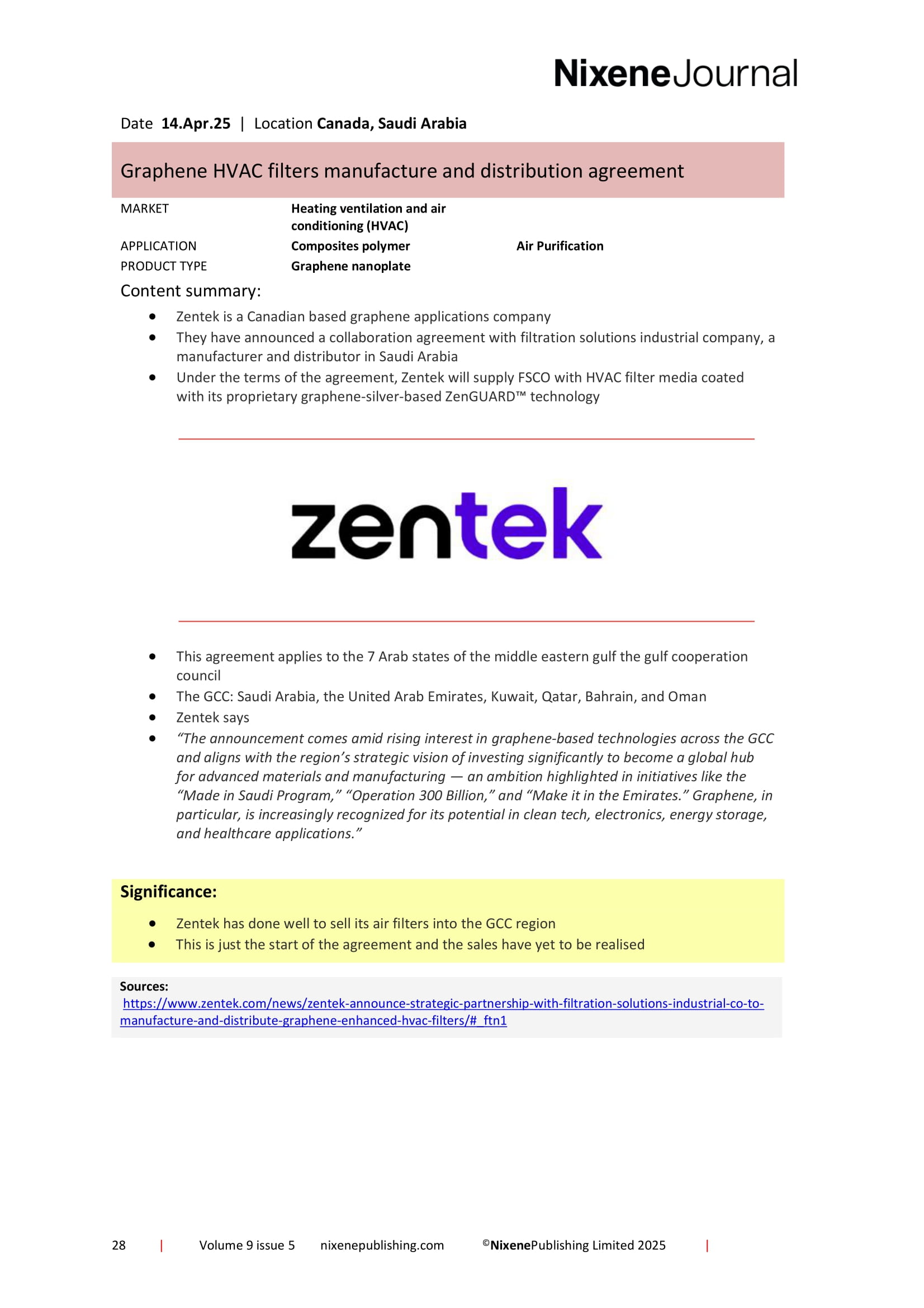Journals
This product is relevant to the following:
Material:
Other:
, ,Locations:
Markets:
Applications:
Product Types:
Technologies:
Related products
-
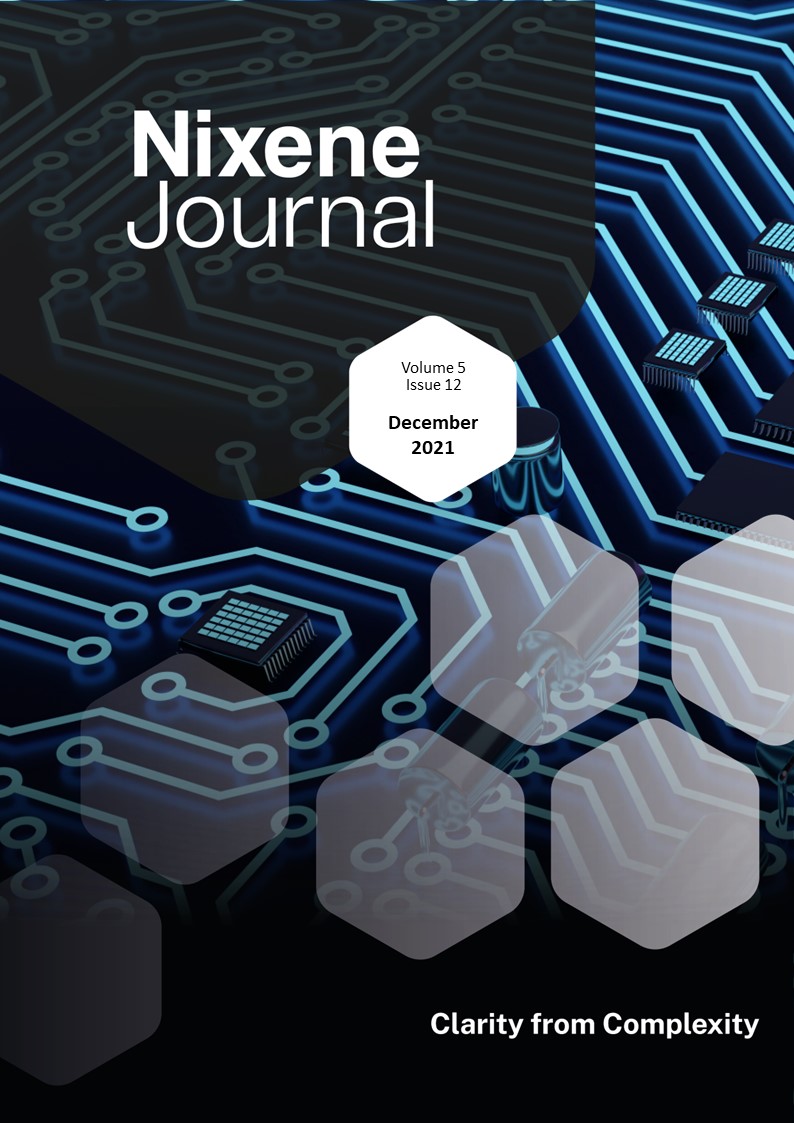
Vol 5 Issue 12
Two new graphene companies have appeared on the radar this month. They both use a similar process to make graphene from methane gas with hydrogen as a by-product. Looking at the patents of the companies they both use a microwave reactor to tear apart the carbon and hydrogen atoms in methane, the carbon atoms recombine as graphene and the hydrogen atoms recombine to form hydrogen gas. There the similarities pause because the two companies have very different approaches for how to market their developments. The first company is Levidian, they are a relaunch of Cambridge Nanosystems from the UK. Their business model is focussed on using waste methane gas from a customer’s process. They use the reactor to lock up the carbon in the methane as graphene and claim carbon capture credits. The graphene production is secondary to this marketing approach. Using disclosures by the company, I was able to create a mass balance for the Levidian method. It appears that the process captures carbon from methane with around 30% efficiency (p.34). Not bad, but still some further progress to make. The second company is California based Lyten who publicly disclosed their activity just a few weeks ago. They were formed in 2015 and have been operating in stealth mode. Their graphene is used to make the electrode for a lithium sulphur (LiS) battery that has three times the energy density of normal lithium-ion batteries (p.35). They have probably decided to come out of stealth mode to raise capital for the scaling up of their process. The company is currently talking with five original equipment manufacturers (OEMs) in the automobile industry. The weakness of LiS batteries has been their capacity fade with repeated charge / discharge cycles. Lyten say they have improved on previous LiS designs so they might have something of interest for manufacturers of electric vehicles. Levidian patented their process in 2014 and Lyten in 2015. Lyten references the Levidian patents in their applications. This is how we know the two processes are very similar. Things could get interesting if one or the other company makes a lot of money in the future. As Elon Musk observed “A patent is like buying a lottery ticket to a lawsuit”. Staying with graphene powder manufacture, we feature John van Leeuwen of Universal Matter in a special feature (p.7). He is leading the drive to scale up the flash graphene process developed by Prof James Tour at Rice University. Universal Matter is definitely a company to watch in the future. All these graphene manufacturing processes are bottom-up, self-assembling graphene atom by atom to create high quality powders. These processes are in their infancy at present. If they can be scaled, they could disrupt the graphene-from-graphite manufacturers in future as they promise controllable quality graphene. This potential market disruption is something we’ll explore in the future, in the meantime there is much more to explore in this issue… Adrian Nixon, 1st December 2021£45.00 View product -
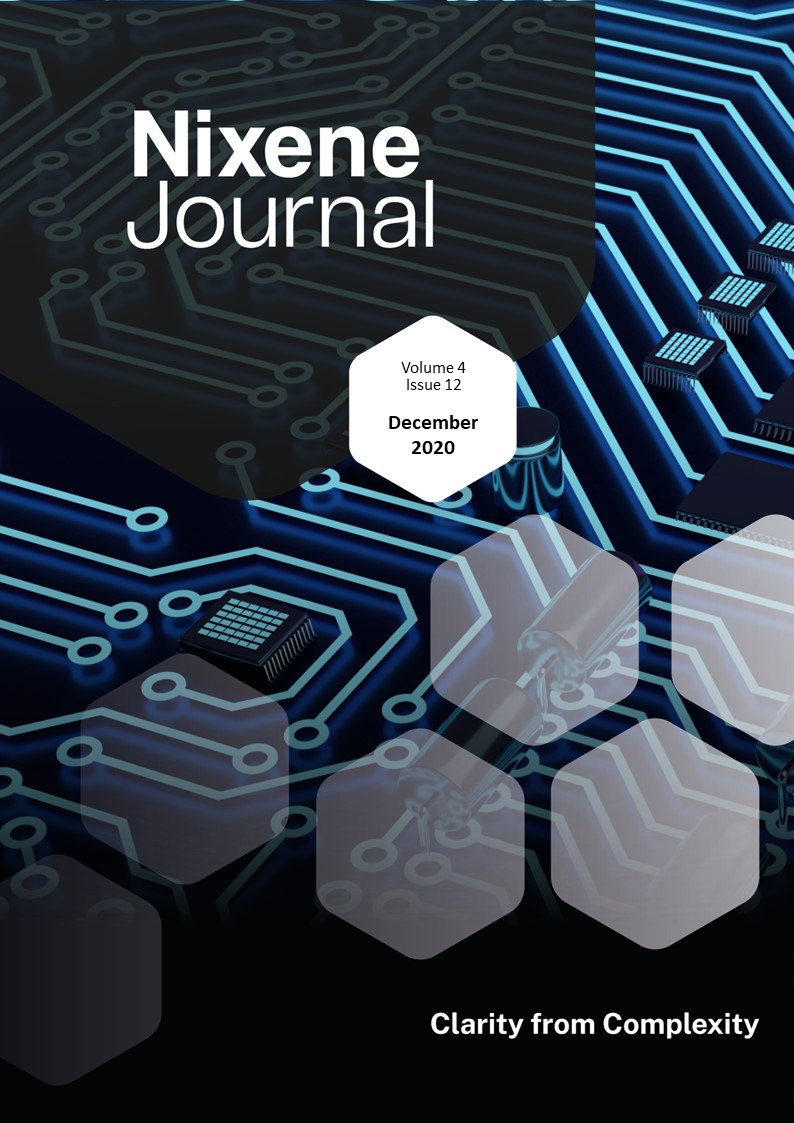
Vol 4 Issue 12
As fascinating as the technical developments are, it is the commercial side which needs highlighting in this summary this month. More evidence is mounting to support James Baker’s claim that graphene has reached a turning point and has overcome the hype of its early teens. We are starting to see noticeable movements in the five-year share price trends of graphene companies. Companies that have antiviral or battery applications are beneficiaries of renewed attention. I’ll draw your attention to the graphene companies share price section of this issue. There is a new graphene company, Sparc Technologies, launched on the Australian stock exchange. It has a deal to commercialise patents developed by the University of Adelaide and has attracted significant investor interest. Another Australian company GMG reported its series C investment round of AUD3million was oversubscribed. The company plans to float on the stock exchange next year. A new company called Toraphene has appeared making an eponymous product that is a graphene biopolymer that makes biodegradable packaging. It launched as a crowdfunded initiative and has raised nearly GBP700K already, double its ask. We have contacted the company and asked for more technical information about its products. Integrated Graphene Ltd, (IG) announced the completion of a GBP3.1 million round of investment in the business, IG is a UK Scottish-based tech company that manufactures a graphene foam that they call Gii. The company is targeting medical diagnostics and supercapacitors markets. Estonian supercapacitor company Skeleton is continuing its unstoppable rise. It announced it has raised EUR41.3 million ($48.5 million) in Series D financing This brings its total capital raised to over EUR93 million ($109 million) Lots of activity around graphene enhanced lithium-ion batteries for electric vehicles. As far as we can tell, this seems to be creating improvements in the life of the battery by maintaining the integrity of the electrodes. Improvements in charging time are also claimed. Tellingly, there is no evidence that graphene is improving the energy density of batteries. The rush to electric vehicles is creating a market pull for better batteries that the technology does not seem to be able to match. For now, if you want to travel further in your battery powered car, then you have to add more batteries. We finally discovered which tool is being used for the at-line Raman spectroscopy quality control for the production of graphene powders. First graphene has acquired the QT-Sampler made by BWTEK Metrohm. This allows the company to measure flake aspect ratio and number of layers of the graphene powders they produce. The data is used for statistical process control which means they have a sophisticated approach to making and characterising a consistent product. Adrian Nixon, 1st December 2020£45.00 View product -
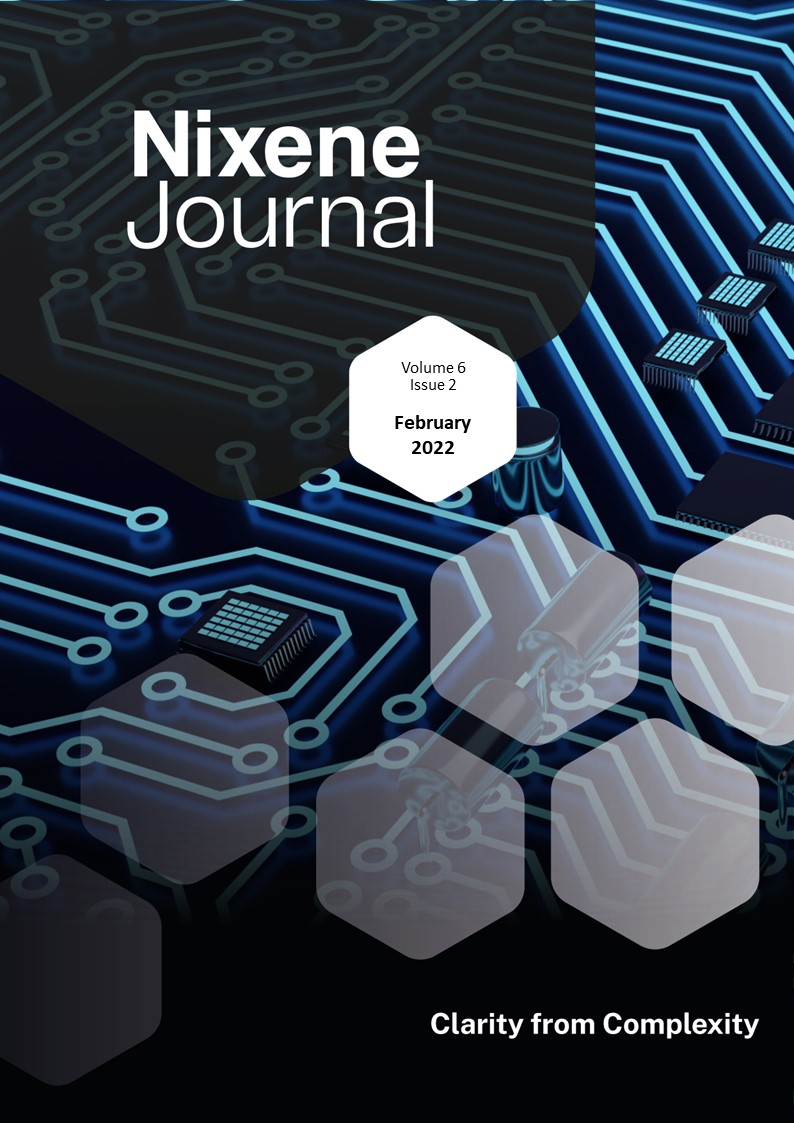
Vol 6 Issue 2
A graphene toaster was demonstrated for the first time at the consumer electronics show in Las Vegas by Korean company Graphene Square. This may not sound like a world changing invention, but it is something worth paying attention to because this is a rare application for chemical vapour deposition (CVD) graphene in a consumer electronics device. Until now, CVD graphene has been used in very small pieces in sensors. This toaster has a piece of CVD graphene on the top and bottom glass panels making a transparent infrared grill. The graphene is made at a scale of 200mm x 150mm and this tells us a that the company has a viable CVD roll to roll process. The process can make graphene at this scale and also provides the capability to separate the graphene from the forming substrate to other surfaces, in this case glass. The next step is to do this commercially. Graphene Square admits this is still at least a year away. This is still impressive progress and tells us that the industrial manufacture of CVD graphene is developing quickly. CVD graphene is also in the news this month. British company Paragraf announced through Queen Mary University, London, that they can create graphene at wafer scale, and this could be a replacement for indium tin oxide (ITO). This was picked up by technology blogs around the world, and graphene manufacturer Versarien felt obliged to disclose it is working on a similar project with a graphene manufacturer in Korea. These announcements about CVD graphene touchscreens sound impressive. However, as far as we can tell from the current state of the art, the economic and technical cases are not sufficiently proven to convince us we will see this technology in the immediate future. The term ‘bottom-up graphene’ used to refer to CVD graphene assembled atom by atom. Graphene powder manufacturing has been evolving rapidly over the last few years and can now be made by atomic assembly methods too. We have summarised the various methods in our special feature. We also look at the implications for competitive activity, as these new manufacturing methods meet the new market dynamics driving the sustainability agenda. While we cannot state which individual companies will achieve success, we can make some predictions about the characteristics successful graphene powder manufacturers will need to have. We hope you agree this makes for fascinating reading along with the rest of the compelling content this issue. Adrian Nixon, 1st February 2022£45.00 View product -
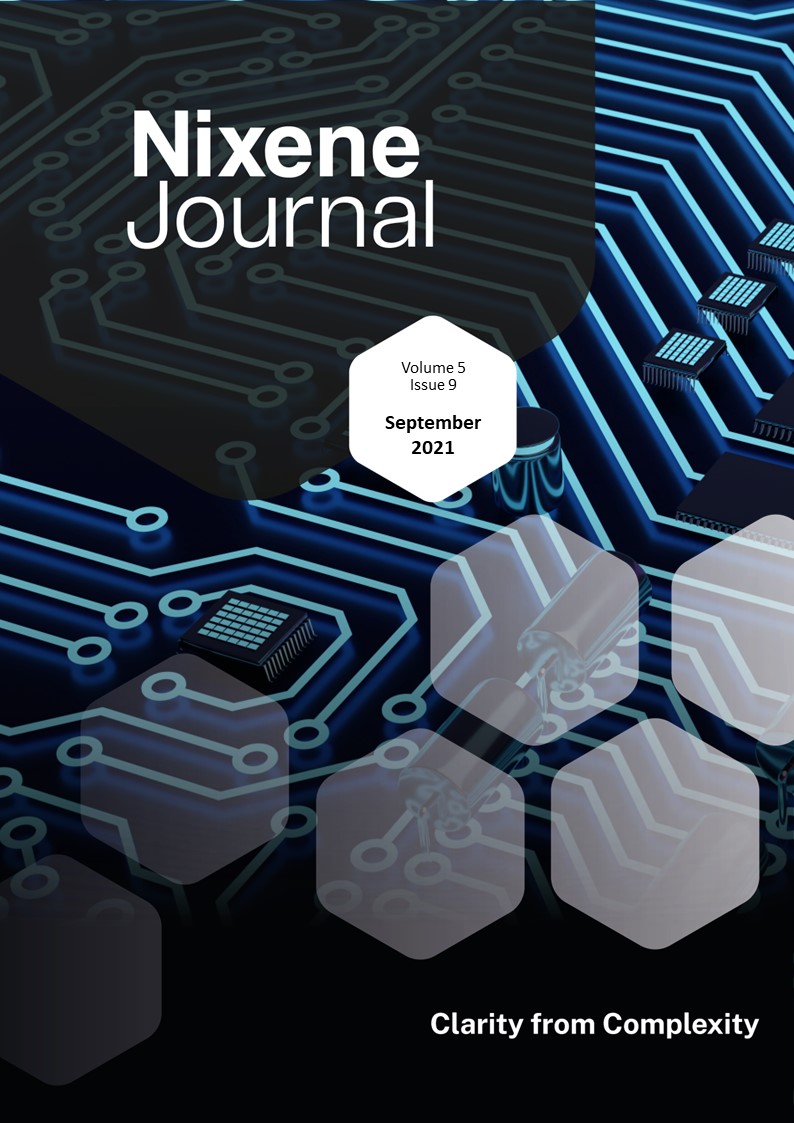
Vol 5 Issue 9
At the time of writing the Paralympic games are still in progress in Tokyo. The able-bodied Olympic games in Tokyo has ended and details of the technology behind some of the medal winning performances has leaked out. Graphene has been playing a role in these games. The gold medal for archery was won by Korea with their athlete using graphene from Standard Graphene to enhance the polymer composite bow. The Women’s cycling produced two gold medals for the Netherlands with the winner using Directa Plus graphene ink in the clothing to maintain optimum heating. Haydale worked with the British team to create a similar wearable technology with its graphene inks for British medal winners. The technology is secret at the moment but we can expect a trickle-down effect to spread graphene further out into the sports market. We have three special features this month. Our Women in Graphene series continues. Debbie an interviewed Akanksha Urade, from India. We noticed Akanksha’s work on our social media feeds, she has a gift for explaining complex subjects in a clear and concise way that shows she really understands the science. This matches our ABC approach (p.6) and we respect her talents, well worth a read. Debbie also interviewed Dr. Chris Griggs of the US Army ERDC. They have been excited about the potential for graphene for some time now and are actively exploring several avenues of development. They are working with Universal Matter who are developing the flash graphene process from Prof James Tour’s lab at Rice University. They also have a strong interest in the removal of toxins from wastewater and they have an increasing interest in graphene and infrastructure applications, particularly with concrete and asphalt. I interviewed the leadership team behind the world’s first application of unreinforced graphene enhanced concrete. The GEIC and Nationwide Engineering have made a quantum leap in the application of this technology that they call Concretene. Concrete can not only be made stronger, so less is used, but graphene also helps the concrete achieve its final strength much faster than anyone expected. We suspect there are more benefits waiting to be discovered from these trials. There is so much more happening in the world of graphene and 2D materials this month. I have run out of space to summarise here so I’ll encourage you to dive into this packed issue and explore further. Adrian Nixon, 1st September 2021£45.00 View product

